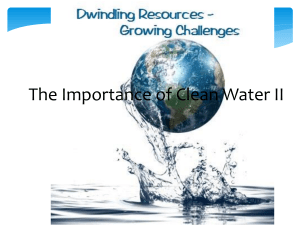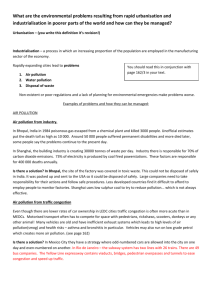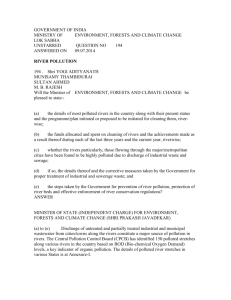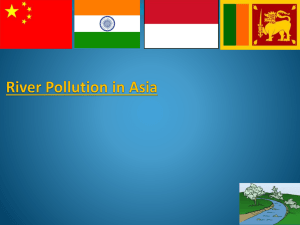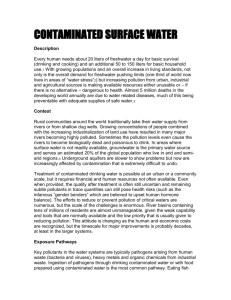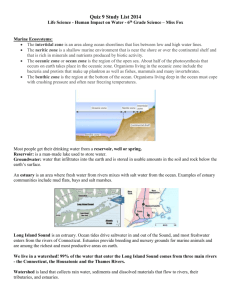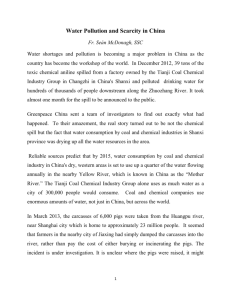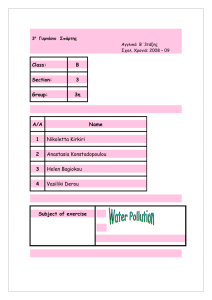Abstract
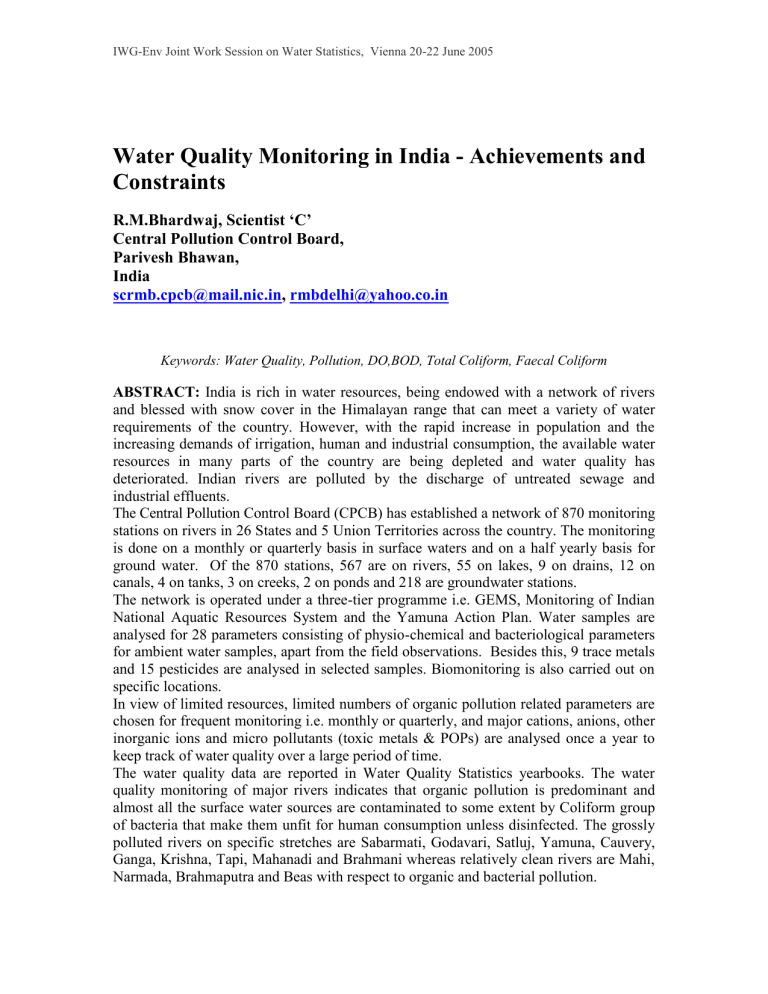
IWG-Env Joint Work Session on Water Statistics, Vienna 20-22 June 2005
Water Quality Monitoring in India - Achievements and
Constraints
R.M.Bhardwaj, Scientist ‘C’
Central Pollution Control Board,
Parivesh Bhawan,
India scrmb.cpcb@mail.nic.in
, rmbdelhi@yahoo.co.in
Keywords: Water Quality, Pollution, DO,BOD, Total Coliform, Faecal Coliform
ABSTRACT: India is rich in water resources, being endowed with a network of rivers and blessed with snow cover in the Himalayan range that can meet a variety of water requirements of the country. However, with the rapid increase in population and the increasing demands of irrigation, human and industrial consumption, the available water resources in many parts of the country are being depleted and water quality has deteriorated. Indian rivers are polluted by the discharge of untreated sewage and industrial effluents.
The Central Pollution Control Board (CPCB) has established a network of 870 monitoring stations on rivers in 26 States and 5 Union Territories across the country. The monitoring is done on a monthly or quarterly basis in surface waters and on a half yearly basis for ground water. Of the 870 stations, 567 are on rivers, 55 on lakes, 9 on drains, 12 on canals, 4 on tanks, 3 on creeks, 2 on ponds and 218 are groundwater stations.
The network is operated under a three-tier programme i.e. GEMS, Monitoring of Indian
National Aquatic Resources System and the Yamuna Action Plan. Water samples are analysed for 28 parameters consisting of physio-chemical and bacteriological parameters for ambient water samples, apart from the field observations. Besides this, 9 trace metals and 15 pesticides are analysed in selected samples. Biomonitoring is also carried out on specific locations.
In view of limited resources, limited numbers of organic pollution related parameters are chosen for frequent monitoring i.e. monthly or quarterly, and major cations, anions, other inorganic ions and micro pollutants (toxic metals & POPs) are analysed once a year to keep track of water quality over a large period of time.
The water quality data are reported in Water Quality Statistics yearbooks. The water quality monitoring of major rivers indicates that organic pollution is predominant and almost all the surface water sources are contaminated to some extent by Coliform group of bacteria that make them unfit for human consumption unless disinfected. The grossly polluted rivers on specific stretches are Sabarmati, Godavari, Satluj, Yamuna, Cauvery,
Ganga, Krishna, Tapi, Mahanadi and Brahmani whereas relatively clean rivers are Mahi,
Narmada, Brahmaputra and Beas with respect to organic and bacterial pollution.



